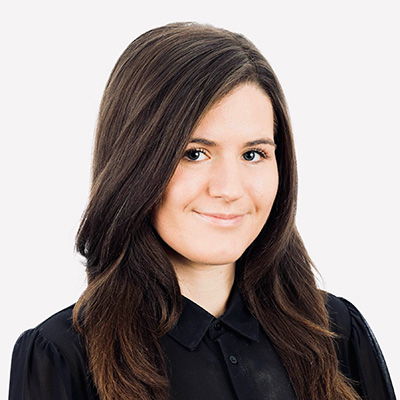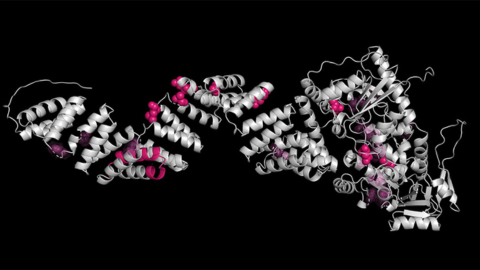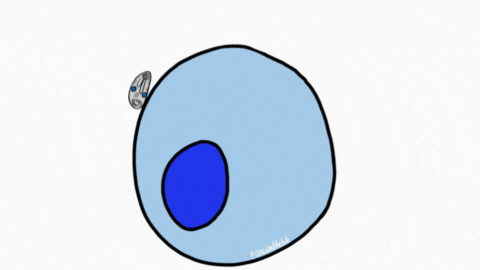Curiosity drives a science writing career
Siobhan Sanford’s career has been driven by her curiosity about the world and has led her to writing roles at scientific journals and pharma companies as well as full-time freelancing.
“I’ve always had a very broad appreciation for science,” she said.

Sanford studied zoology while earning bachelor’s and master’s degrees at the University of Sheffield, and she considered pursuing a Ph.D. However, she was more interested in learning about all the sciences, from physics to chemistry to biology, than in focusing on just one Ph.D. topic, so she wanted to find a route other than bench research.
While a student, she attended a lecture by science writer Ed Yong. Sanford saw his career as a way to avoid siloing herself into one sliver of science and to stay close to the cutting edge of research without having to do the experiments.
Editorial work
After graduating, Sanford found an internship at European Medical Journal, a publishing group founded in 2012 that puts out a suite of journals on medically related topics. She reported on conferences and worked as an assistant editor.
She moved to an editorial position at Nature for two years, working in the Nature Research Journals division. Although her role was distinct from that of the scientific editors who focus on peer review and accepting or rejecting articles, Sanford supported the editors through writing and content development for more journalistic pieces such as News and Views, Comments and book reviews and by coordinating with press teams and editing research articles for accuracy and style.
Agency work
With her editorial background, Sanford next found a job as a content writer on a life science team at Instinctif Partners, a communications and consultancy company.
“Agency work is very hard, balancing all the different projects and balancing your hours,” she said, “but it’s a good place to develop and learn new skills. I also got to work with many different biotech and pharma companies, so it was great to be exposed to that ecosystem and start building a network.”
While it wasn’t a position she wanted to stay in long term, it set her up for the next phase of her career, freelancing.
(For more on working at a company like this, look at the career profiles of Brittany and Ashlea)
Sanford decided it was time to leave when her work started moving away from her interests. In communications companies, focus often shifts from writing to client management as an employee gets more senior, and Sanford wanted to stay focused on writing, so she made the leap to freelancing.
Going freelance
“It was a bit of a risk, but I waited until I had a few months’ savings before making the move,” Sanford said of leaving her full-time job. “Starting out as a freelancer becomes a lot scarier if you don’t have savings to fall back on.”
Sanford’s start in freelancing coincided with the COVID-19 pandemic, which in a way helped her.
“The science industry was speeding up while others were slowing down, but people were also hesitating when it came to hiring people for full-time positions,” she said. “So there were a lot of opportunities for a freelancer with experience in the industry.”
She continued to spend part of her time working with life science agencies, as many had increasing demands, and she also reached out to Nature and got some steady assignments there.
Sanford put together other part-time, hourly, and short-term positions and projects. Sometimes, she’d find advertised full-time writing positions and ask if they needed work done in the interim. They often had projects they needed completed — a blog post or a news article, for example.
That work left her free time to pursue more journalistic work, which also interested her. She began reporting on preclinical and translational research for BioCentury, a company that publishes analysis of the pharma and biotech landscape.
Freelancing requires planning of both time and money, and it can have a feast-or-famine aspect when several projects come up at once and then fewer assignments are available later. Some work availability is outside your control, but a freelancer needs to become good at estimating how much time and effort a project will take.
While some projects were assigned with a price already attached, Sanford would often have to determine what to charge someone for a job, which requires understanding how long work takes. In those cases, she’d estimate the time and effort that would go into a piece; for example, a 1,000-word article might involve doing interviews, reading up on background, writing the draft, making revisions, and maybe other costs and time such as doing illustrations (a useful skill for a freelancer). Sanford would make her best estimate and offer clients the option of an hourly or daily rate with her estimated hours or a fixed rate per project.
Note that Sanford lives in the U.K., where health insurance works differently than in the U.S. While freelancing, she had to buy her own health insurance or rely on the U.K.’s National Health Service, but the costs to factor into a freelancer financial plan might not be comparable to costs in the U.S.
Full time in pharma
Sanford now works full time at the pharma company GSK, where her primary role is to develop online articles for their artificial intelligence and machine learning group (GSK AI/ML) that are published on the GSK.ai blog.
She was enjoying her freelance work when she saw an ad for the position on Linkedin. She started as a contractor and found it was a great opportunity to learn about emerging AI/ML technologies and gain experience as a tech writer. She’s worked closely with Kim Branson (senior vice president and global head of GSK AI/ML), as well as with a team that includes biologists, AI/ML engineers and AI ethicists.
Although she enjoyed freelancing, Sanford transitioned to a full-time employee after a few months because she wanted to continue doing the work. While she may return to freelancing in the future, she said she relishes learning so much in this position.
Advice to aspiring science writers
Sanford said science writers need to find mentors — both editorial/writing mentors and career mentors.
“For a long time, I didn’t actively seek out mentors, but I have fortunately met some very good people through work,” she said. “People that have taught me to write clearly and concisely, and pushed me toward better storytelling. For example, by including strong narratives and spotlighting some of the human aspects of the work.”
Finding the right mindset to write can be a challenge, especially for freelancers who work alone. Mentors and colleagues, even on Zoom, can help with this.
“If you're working with other writers, they understand the time it takes and how much headspace and creativity it takes,” Sanford said.
When working alone, Sanford said, establishing a routine can be key to getting work done. On the other hand, she also recommends allowing for random moments of inspiration when your mind is wandering.
Sanford’s biggest tip for aspiring writers is to read, including work aimed at different audiences.
“Excessively reading is going to help you — books, news articles and features, research papers, blogs and newsletters through services such as Substack,” she said. “Reading widely and often is what will really allow you to learn different styles of writing and to learn about the science itself.”
Enjoy reading ASBMB Today?
Become a member to receive the print edition four times a year and the digital edition monthly.
Learn moreFeatured jobs
from the ASBMB career center
Get the latest from ASBMB Today
Enter your email address, and we’ll send you a weekly email with recent articles, interviews and more.
Latest in Careers
Careers highlights or most popular articles

Upcoming opportunities
Friendly reminder: May 12 is the early registration and oral abstract deadline for ASBMB's meeting on O-GlcNAcylation in health and disease.

Sketching, scribbling and scicomm
Graduate student Ari Paiz describes how her love of science and art blend to make her an effective science communicator.

Embrace your neurodivergence and flourish in college
This guide offers practical advice on setting yourself up for success — learn how to leverage campus resources, work with professors and embrace your strengths.

Upcoming opportunities
Apply for the ASBMB Interactive Mentoring Activities for Grantsmanship Enhancement grant writing workshop by April 15.

Quieting the static: Building inclusive STEM classrooms
Christin Monroe, an assistant professor of chemistry at Landmark College, offers practical tips to help educators make their classrooms more accessible to neurodivergent scientists.

Unraveling oncogenesis: What makes cancer tick?
Learn about the ASBMB 2025 symposium on oncogenic hubs: chromatin regulatory and transcriptional complexes in cancer.

